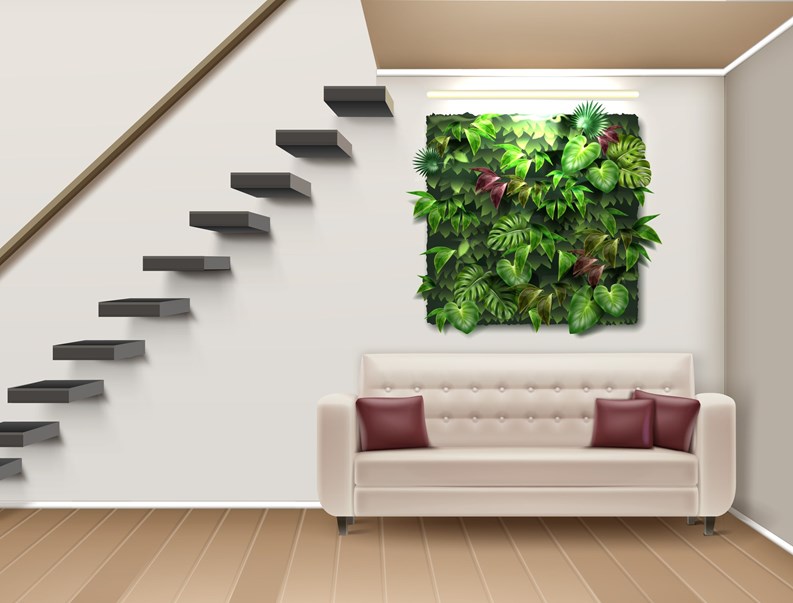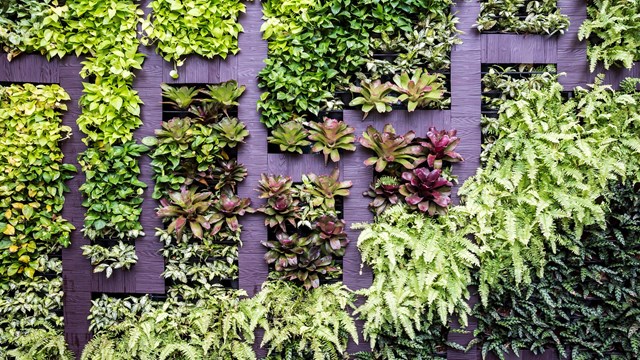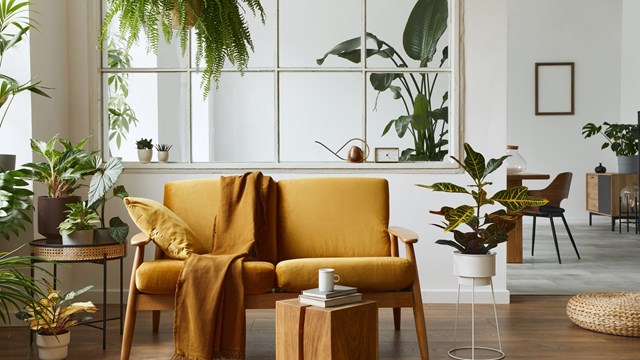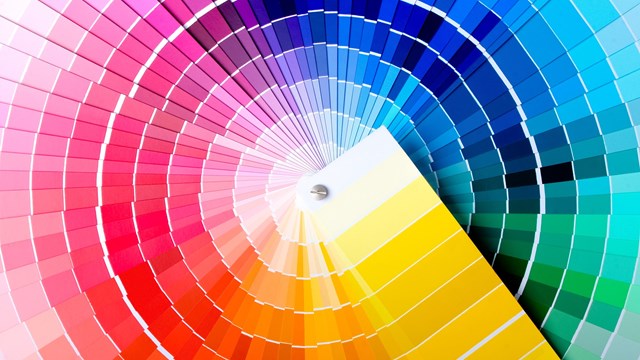For as long as there have been houses, there have been houseplants. Now landscape architects and technology have joined forces to offer the ultimate in indoor botany: the living wall.
Known alternately as a green wall, or even living art, living walls are self-sufficient vertical gardens that are attached to the interior or exterior of a building. This innovation in landscape design is both aesthetic and environmental; it creates an exquisite visual effect as well as an environmental one, providing naturally-filtered air and other benefits to improve the indoor environment and overall air quality.
Green walls can be placed anywhere in a lobby, a foyer, or even a private apartment unit. They can be as small as 18 inches by 24 inches, or as large as a full wall. They differ from the classic ivy-covered exterior facade in that the plants in a green wall root in a structural support fastened to the wall itself. The plants receive nutrients and water from the support, instead of from the ground or the rain.
The Setup
Alan Burchell is the founder and principal of UrbanStrong, an urban design firm in Brooklyn that specializes in the design, installation and maintenance of living walls, green roofs, and other environmentally-conscious services and products. He describes a green wall as "vertical gardens," and says that "They can be built into the wall with connections to water supply, drainage and lighting, or simply can be more mobile and temporary, planted in a frame that is mounted on the wall, like art.”
The potential plant infrastructure can be self-sustaining or supplied externally. A self-sustaining frame generally provides for some type of medium in which the plants are set, bringing stability and nutrition in place of soil, and containing an internal reservoir and circulation system to keep the plants watered. While this type of system is more commonly used with smaller living walls -- think vertical terrarium -- it can be utilized with any size green wall. However, larger systems--typically those used in lobbies of both residential and commercial buildings--are likely to have more sophisticated reservoir and pumping systems, which are generally installed in closets or other spaces nearby, but hidden from view.
The Costs
Michele Boddewyn, President of Boddewyn Gaynor Architects, an architecture and design firm in New York, says that green walls are expensive. She also cautions that they require built-in irrigation, controls and timers, and are not compatible with pool environments due to high levels of chlorine present in pool settings.
According to Burchell, "The price for a green wall can range from $150 to $300 per square foot, depending on the size and type of installation.” For a 10-foot by 10-foot living wall, the resulting cost could range from $15,000 to $30,000. Of course, a small vertical garden for an apartment, say 2 feet by 3 feet, would be much less -- perhaps around $1,000--which is quite a bargain, compared with the price of a more traditional oil painting or other non-living artwork!
The Benefits
Surprisingly, much of the research that resulted in living walls was conducted by NASA. Think about it: a vertical terrarium such as a living wall is potentially a way to grow food in space while also replenishing oxygen in the closed environment of a spacecraft.
“Like green roofs,” says Burchell, “living walls have a range of benefits. Many people chose them for artistic beauty. The plants are a living paint palette [of] different colors, textures and patterns. Plants offer an environmental function as well, passively cleaning and cooling, or alternatively warming the air, not unlike a mechanical air purifier. Through photosynthesis, the method by which plants breathe, the living wall absorbs impurities and provides oxygen.”
In addition to health and environmental reasons, living walls provide other benefits. For instance, they are child-friendly and often used in schools. “The kids love them,” says Burchell. “They may want to touch the plants, but with gentle instruction they won’t damage them.”
Recent studies of living environments and urban development have also shown that there is a human need for a connection to nature. Living walls bring nature into homes.
Lastly, explains Burchell, residents of small apartments usually have far more wall space to spare than floor space -- so why not take those plants off the floor and put them on the walls instead? Living art might be for you.
AJ Sidransky is a staff writer for The Cooperator, and a published novelist.







Leave a Comment